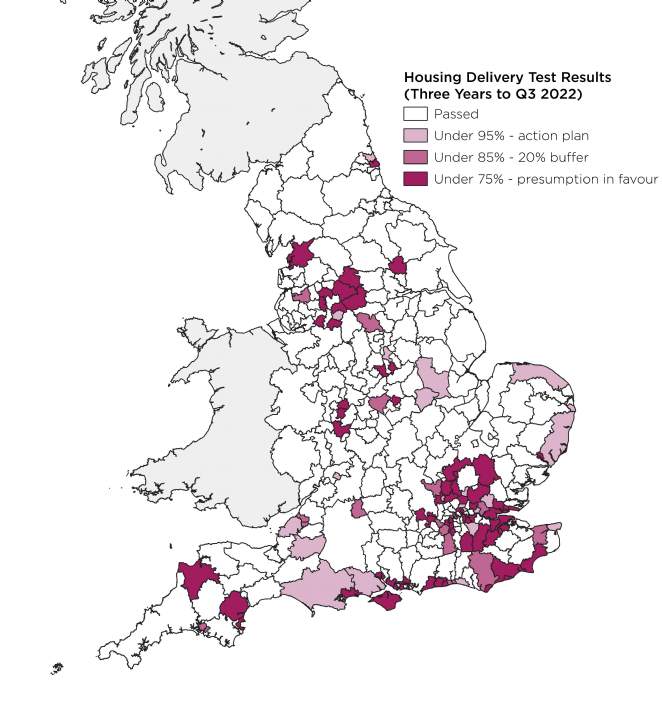Development pipeline expanded in Q3
All parts of the housing development pipeline enjoyed a period of growth during the year to Q3. But housebuilders are now reporting lower numbers of sales, in line with the wider housing market. Combined with the lack of consents, this suggests housing delivery will be lower during 2023 (click here for more).
The number of consents increased marginally after several consecutive quarters of decline, with around 285,000 new homes gaining consent. This remains 12% down on the 2017-19 average. With the target of 300,000 new homes a year reaffirmed by the new administration, substantially more consents are needed. In order to be sure of hitting the target, consents ultimately need to reach well above 300,000 due to attrition in the development process.
Construction also enjoyed a boost, with the number of new homes being started on site rising 28% between Q1 and Q2. That took the annual number of starts to the highest level since just before the 2008 financial crisis.
There was further good news on completions, as both numbers from housebuilder reports and EPC data showed increases over the last six months. The latest figures suggest that 244,200 new homes were built in the twelve months to Q3 2022. That puts new home completions just 4% behind their recent peak in 2019.
